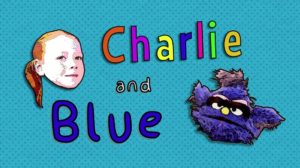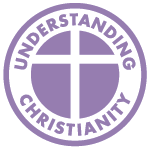An investigation into the importance of Muhammad (pbuh) for pupils with special needs achieving at ‘P Levels’ 1-8.
For pupils with special needs achieving at ‘P Levels’ 1-8. Originally written by Anne Krisman. Updated in April 2019.
Learning Outcomes
Emerging
- Talk about what makes you and others special and unique
- Use the word ‘Qur’an’ in talking or writing
Expected
- Use the words ‘Muhammad’, ‘Islam’ and ‘Muslim’ correctly
- Explain how Muhammad heard God’s words
- Explain why Muhammad is inspirational to Muslims
Exceeding
- Explain, with reference to two Islamic practices, how we can see the impact Muhammad had on Islam
Key words and concepts
Hadith: a report of what the prophet Muhammad said or did. Used as guidance by Muslims.
Nasheed: a form of unaccompanied Islamic devotional music. Sometimes a drum is used.
Qur’an: meaning ‘recitations’. God’s words revealed through the prophet Muhammad in Muslim belief.
Inspirational: influencing people to lead their lives in a special way.
This resource uses the idea of ‘burning core ideas’ to express the key knowledge to communicate to pupils:
- Muhammad is special to Muslims;
- Islam is the name of the Muslim religion;
- Muslims believe in one God called Allah;
- Muslims cannot see their God;
- Muslims do not make pictures of Allah or Muhammad as people;
- Muslims’ holy book is called the Qur’an.
Further key ideas and knowledge:
- Muhammad was trusted by people – they called him Al-Amin (the one you can trust);
- Muhammad believed in one God called Allah;
- Muslims call him a messenger and prophet of Islam (rasul);
- Muslims say ‘Peace be Upon Him’ after the name of Muhammad, sometimes written as ‘pbuh’;
- Muslims believe an angel appeared to Muhammad in a cave on a mountain (Mount Hira);
- Muslims believe the angel, called Jibril, revealed the words of the Qur’an;
- Muslims try to lead their lives from the example of Muhammad.
Learning activities
The following activities follow the ‘Five Keys Into RE’ approach (Anne Krisman)
1 Connection – How can we link our theme with pupils’ lives?
Share these thoughts with the pupils:
- We all have special unique qualities.
- We like to help others.
- We have special places where we can be calm.
- We care about
Let pupils know that Muhammad was known as ‘The Friend’ and ‘The Helper’ and that they are going to look at things that connect them with the life of Muhammad. This will begin by looking at their special unique qualities.
Share or gather the special qualities of each child in the class. This can be done by sharing ideas in the classroom, by going around the school and asking people who know them well, or by asking parents and carers to respond. Words such as helpful, kind, peaceful will be gathered.
Make the names and qualities into a class performance: names can be signed, clapped, drummed or chanted for each child, e.g., Joshua the Peaceful, Hannah the Friend.
Make a display with pupils’ pictures, their new values name and where appropriate, comments about why this name is right for them.
Paint either a) the pupil’s first name or b) their values name onto the fold of an A3 or larger piece of paper. Fold the paper to create a symmetrical design. Ask the pupils to then decorate and beautify their name.
An additional idea is to write the pupil’s values name in PVA glue and to encourage children to throw different coloured sand onto it. If you wish to highlight Muhammad’s special colour during this theme, use green sand.
While working you could play different nasheeds about Muhammad, you will find many on you Tube, such as:
- Ya Muhammad
- Muhammad (Peace be Upon Him)
- 99 Names for Muhammad
- 99 Names of Muhammad (translated)
2 Knowledge – How can we communicate burning core knowledge within the theme to our pupils?
Share these examples of burning core knowledge with the pupils:
- Muhammad was trusted by people (Al-Amin);
- Muhammad believed in one God called Allah;
- Muslims call him a prophet and messenger of God (rasul);
- Muslims believe an angel appeared to him in a cave and revealed to him the words of the Qur’an.
Let pupils know that Muhammad was valued by people and called Al-Amin – The Trustworthy. Muslims believe he was a messenger of God and that they are going to learn more about his life.
To highlight the importance of Muhammad’s name of Al-Amin – The Trustworthy – trust the pupils to take a special gold wrapped package to another class. Arrange for the member of staff who receives the package to affirm the trust placed in the pupils and to pass on something special from their room for the pupils to take back to their class.
Ask pupils to carry a message in an envelope or sign that Muslims believe there is only one God and tell this to others in the class or around the school. Anyone who hears the message can take a gold star and add it to a picture of the Arabic calligraphy for Allah, to show that the message has been heard.
Let pupils know that Muhammad believed in one God called Allah.
Listen and watch popular nasheeds which mention Allah, for example Yusuf Islam: A is for Allah, Zain Bhikha: Mountain of Mecca.
Encourage pupils to sign the letter A and the number one while responding to the music.
Islamic plaques with Muslim prayers and the raised names of Allah and Muhammad can be touched – these can be obtained from shops in areas with a Muslim population and through artefact catalogues.
Print out lots of small pictures of the word Allah in Arabic calligraphy. Ask pupils to carefully stick the words on to gold paper, trying to put them on the right way up and showing care in placing them, to reflect how Muslims respond to the name of God. [This can also be repeated with the name of Muhammad, this time sticking the names on green paper and keeping the same rules of respect and care. These two pieces of work can be stuck together and a beautiful border made around them, to link them, with glitter.]
Let pupils know that, Muslims believe that an angel appeared to Muhammad in a cave and revealed to him the words of the Qur’an
Show images of Mount Hira while listening to Zain Bhikha’s Mountain of Mecca.
Ask pupils to create a collage made from brown ripped paper, of the cave at Mount Hira. Then, without creating a human image, add the feeling of the angel Jibril, using glitter, holographic paper, cellophane etc.
Make a peaceful cave area in the classroom by putting together prayer mats, cushions and glittery material. Add light changing resources to show the presence of an angel.
Introduce pupils to the first of four stories of Muhammad and use the sensory story guide to help pupils know about the revelation that Muslims believe Muhammad received on Mount Hira.
Share the sensory story together, allow time for the stimuli to be experienced by each pupil.
Ask pupils to reflect on the story and, where appropriate, to ask questions about it.
Where appropriate, choose a question to focus on, for example, ‘Why did the angel say, “Read!”?’ and share possible answers. Adults can also ask questions and respond.
If time, share the story once more.
3 Senses – Which sensory elements are in the theme?
The following sensory activities can help pupils experience something of the life of Muhammad and the importance of Islam to Muslims:
Recitation of the Qur’an and Call to Prayer (adhan);
Islamic nasheeds (unaccompanied devotional music, sometimes using drums);
Prayer mat and topi (prayer cap).
Play a version of the Call to Prayer (adhan) to pupils while they use red, orange, purple and yellow crayons or sponge paint to create a sunset sky. Versions to be used could include those from Turkey, Bosnia, Saudi Arabia and Egypt as well as British muezzins.
Afterwards, encourage pupils to add a black paper cut-out of a dome and minaret, to give a scene of a mosque at sunset.
Engage pupils in the experience of wearing or touching a Muslim prayer cap (topi) for boys and headscarf for girls, while turning the pages of a Qur’an on the whiteboard, a resource called ‘Baybar’s Magnificent Qur’an’.
Encourage them to touch some Muslim prayer mats and then look at how Muslims pray, such as by looking at video clips or animation online.
Help pupils make a prayer mat out of sensory materials, such as textured wallpaper. The prayer mat could include arches, a picture of the Ka’bah at Mecca, and a hanging lamp to stick on.
4 Symbols – Which symbols are the most accessible in the theme?
Share these examples of Muslim symbols with the pupils:
- Moon and star;
- Arabic name of Muhammad and Allah;
- Salaam (peace) – Muslims say ‘peace be upon him’ when talking about Muhammad;
- Islamic art symmetrical designs.
Crescent Moon and Star
Invite pupils to recognise the moon and stars in a slideshow of pictures and to sort a selection of pictures of crescent moons and stars.
Encourage pupils to use Makaton signing for star and moon while listening to a song about wonder in the universe, for example There is Only One God by Zain Bhikha.
Encourage pupils to make collage pictures of the Muslim symbol – the crescent moon and star, or rub over a moon and star stencil and decorate.
Salaam – Peace
Ask pupils to identify what makes them feel peaceful out of a choice of different pictures, such as listening to music, going on the computer, lying down, praying, etc.
Help them practise writing the word Salaam in paint while listening to peaceful chill out music.
Ask pupils to make a dove of peace – there are many templates online. Add cut-outs of the name of Muhammad, with crescent moon and star symbols, to show that Muslims say ‘peace be upon him’ when talking about him.
Islamic art symmetrical designs
Explain that Muslims believe only Allah is the creator and so natural designs are shown in a non-realistic but beautiful way, with unexpected colours being used. Repetition of designs shows that God goes on for ever. An example can be found in Iznik pottery from the 16th century Ottoman Empire, although its designs are still being used for ceramics in Turkey.
Show images of Iznik art from the Turkish tradition. Ask pupils to look for the colours of blue, red and white and for flowers.
Prepare four pieces of black, blue, red and white paper and make concertina folds. The black will be used for the background. Ask pupils to draw simple flower designs and leaves shapes on the three pieces of paper and to cut these up. They should then lay out the three elements of the flower design on the concertina folded black paper, trying to repeat the pattern.
Create an Iznik Art gallery from the pictures, displayed with images of Iznik art pottery.
5 Values – Which values in the theme speak to our pupils?
Share these examples of Muslim values with the pupils:
- Following a straight path
- Helping poor people
- Caring for animals
- Forgiveness
Explain to pupils that they are going to learn about three more stories about Muhammad (Muslims say peace be upon him) that will help them understand how inspirational he is for all Muslims and how he set an example for all Muslims to follow.
Share the sensory story of Muhammad and Crying Camel allowing time for the stimuli to be delivered in a caring manner to each pupil.
Ask pupils to reflect on the story and, where appropriate, to comment and ask questions about it.
Where appropriate, choose questions to focus on, for example, ‘How do we look when we are sad?’ ‘How can we be kind to animals?’ and share possible answers. Adults can also ask questions and respond.
If time, share the story once more.
In follow up lessons, use Muhammad and the Old Woman, as a call and response poem, and Muhammad and the Sleeping Kitten, with the associated activities, to show how inspirational Muhammad is for Muslims. Can pupils identify the parts of each story that show that Muhammad was helpful, kind, compassionate, loving, generous, following a straight path, brave, forgiving?



